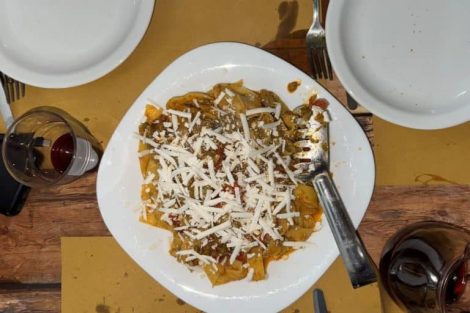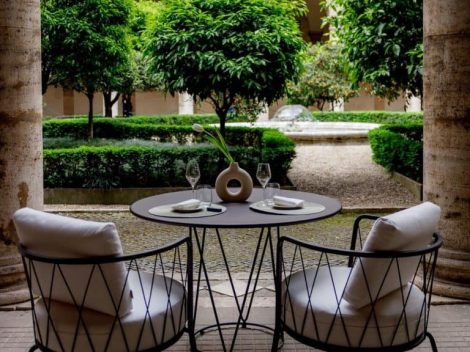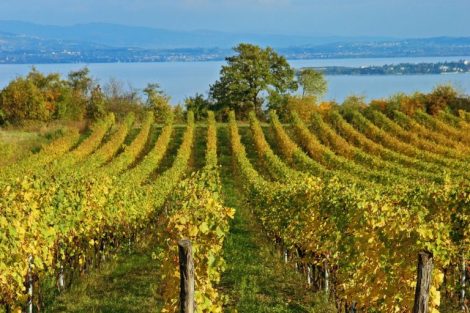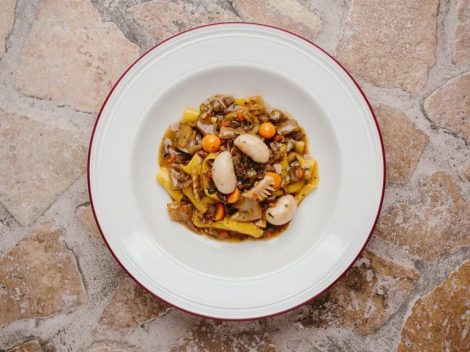A land between soil and sea, marked by dry stone walls (in Italian called 'muretti a secco') that define thousands of plots cultivated with passion and patience: vast vineyards, mostly grown in the traditional "alberello" (bush vine) system, reaching the coast and alternating with olive groves, farmsteads, palaces, and churches. These are the heartlands of Primitivo di Manduria, a wine born from the primitivo grape, which, as its name suggests, ripens early and is harvested as early as late August. This year, once again, several labels have been awarded the prestigious Tre Bicchieri in Puglia.
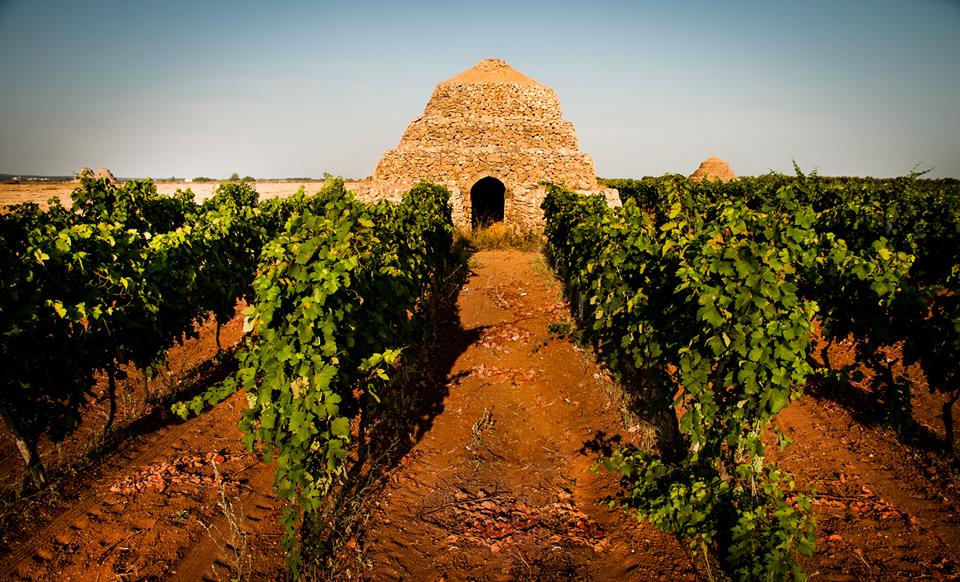
The Primitivo growing area reaches its peak in Manduria, but the denomination includes 18 municipalities in the provinces of Taranto and Brindisi, currently covering around 5,000 hectares of vineyards. The landscape varies from red soils rich in iron deposits to limestone-based lands, becoming looser and almost sandy closer to the sea.
Primitivo di Manduria: Origins and Characteristics
The origins of this grape variety are ancient: it was probably the Illyrians who brought their vines from Dalmatia to Puglia. Other theories suggest that primitivo originated in a magnificent botanical garden of the Austro-Hungarian emperors, from which plants were sent to Puglia—where they became known as primitivo—and to California, where they took the name zinfandel. The only certainty, according to historians, is that Primitivo arrived in Puglia around the 18th century.
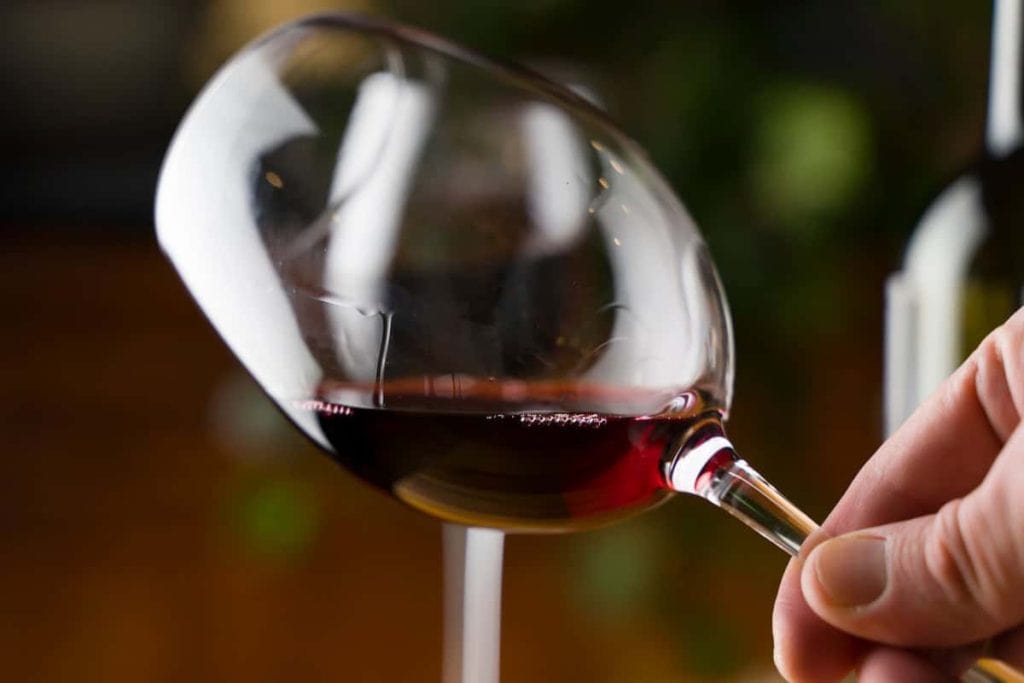
The resulting wine is deep red, warm, sumptuous, and enveloping, with a bouquet of stewed plums and cherries, blueberry jam, dried flowers, spicy notes, and unmistakable scents of Mediterranean scrub. On the palate, it is rich and deep, with luscious fruity notes, good tannic structure, and balanced freshness. Its persistent finish is surprising for a wine of such structure. Additionally, Primitivo embodies the essence of the Ionian Sea waves and the distinctive characteristics of the region’s iron-rich red soil. The presence of low-growing "alberello" vines near the coast is a great advantage: the sea breeze adds a touch of salinity, complexity, and charm to these full-bodied and structured wines.
The best value for money Primitivo di Manduria wines
The following list features the Primitivo di Manduria wines that we most appreciated for their value for money, as selected for the Berebene 2025 and Vini d’Italia 2025 guides by Gambero Rosso.
The Primitivo di Manduria Empirio '22 reveals notes of black fruits, black cherry jam, and cinnamon on the nose, with balsamic nuances, while the palate is juicy and savory.
Founded in the last years of the previous century, Vinicola Mediterranea (based in San Pietro Vernotico) quickly transitioned from selling bulk wine to bottling and creating its own brand. Today, it boasts an annual production of approximately half a million bottles.
The Primitivo di Manduria Il Rosso '23 is well-crafted, offering balsamic and wild black fruit aromas on the nose, leading to a fruity palate with a pleasant, long, and savory finish. The Vespa family winery manages several vineyards in the Manduria and Salice Salentino areas, spanning over 30 hectares, primarily on clay and sandy soils, where Primitivo is the flagship grape variety.
The Primitivo di Manduria Li Janni '23 presents notes of red fruits, tea leaves, and leather on the nose, with a palate dominated by fruit, long and enjoyable. For over three generations, the Campa family has been cultivating grapes in Torricella, within the Primitivo di Manduria denomination. Today, the estate covers 25 hectares with a biodynamic approach, three-quarters of which are planted with bush-trained vines on medium-clay soils and red earth.
The Primitivo di Manduria Lirica '22 showcases aromas of black fruit jam, leather, and damp earth on the nose, while the palate is full-bodied and well-rounded. A historic cooperative winery, Produttori di Manduria has 400 contributing members who cultivate 900 hectares of vineyards, all within the Primitivo di Manduria denomination, with a significant presence of bush-trained vines.
The Primitivo Mirea '22 opens with aromas of blackberry, black cherry, and undergrowth, while the palate is consistent, well-structured, and boasts good acidity and length, with a finish rich in fruit. Less than a decade ago, Masseria Borgo dei Trulli acquired vineyards in the Primitivo di Manduria area, specifically in the municipalities of Sava, Manduria, and Maruggio, where the winery is located, as well as in the Salice Salentino zone.
The Primitivo di Manduria Terra Bianca Giravolta '20 presents a complex and multifaceted nose with notes of ripe plum, undergrowth, and cloves, while the palate is fresh, tense, and long, with an austere finish free from excessive sweetness. Felline, Gregory Perrucci’s winery, operates across various areas within the Primitivo di Manduria denomination, offering a range of labels that highlight the region's diverse terroirs, as reflected in the names of the wines.
The Primitivo di Manduria Li Filitti Riserva '20 features aromas of red fruits, cinchona, white pepper, and undergrowth, while the palate is well-structured, persistent, and long. Masca del Tacco is the Puglian winery of Felice Mergè, also the owner of Poggio Le Volpi in the Castelli Romani. The estate's vineyards are located in the municipalities of Erchie, Veglie, and Torricella, on various soil types, and include both traditional and international grape varieties. The wines, with a decidedly modern approach, strive for fullness and volume while maintaining remarkable aromatic precision.
The Primitivo di Manduria Le Cerrate '22 by Masseria Li Veli is well-crafted, offering notes of figs and dates. The Falvo family’s vineyards are located between Cellino San Marco, where most vines are bush-trained on red and sandy soils and where mainly red grapes are grown, and the Itria Valley, where white grape varieties dominate. The estate primarily cultivates traditional varieties, producing modern-style wines that aim to express both typicity and varietal character.
The Primitivo di Manduria Villa Santera '23 by Leone de Castris is well-made, benefiting from the estate’s various properties located in the municipalities of Salice Salentino, Campi, Guagnano, and Gioia del Colle. About half of the vineyards consist of bush-trained vines, featuring both traditional and international varieties. The wide range of labels produced follows a modern approach, offering wines that range from fruit-forward and accessible to more complex and age-worthy expressions.
The Primitivo di Manduria San Gaetano '23 presents aromas of black fruit jam and cinnamon, with herbal undertones. It is long and supported by good acidity. Cantina Due Palme counts about a thousand contributing members who cultivate a significant vineyard area across the provinces of Brindisi, Taranto, and Lecce. Forty percent of the vines are trained as bush vines, and 90% of the production consists of red grapes. The extensive wine portfolio primarily features traditional varieties, producing labels with a distinctly Mediterranean character, balancing traditional viticulture with a modern winemaking approach.
The Primitivo di Manduria Passo del Cardinale '23 is well-executed, boasting good density and rich fruit expression. The Leo family winery operates two facilities, one in San Donaci, within the Salice Salentino denomination, and the other in Monteparano, at the gateway to the Primitivo di Manduria area. The estate offers around forty different labels, sourced both from its own bush-trained vineyards and from trusted growers overseen by the winery’s technical team. The wines have a modern profile, focusing on fruit-forward appeal and drinkability.
The Primitivo di Manduria Talò '23 by San Marzano Vini is a well-made wine from a cooperative of 1,200 contributing growers. The vineyards are primarily located in the municipalities of San Marzano, Sava, and Francavilla Fontana, planted on red soils and limestone-rich terrain, mainly with traditional varieties, including a significant presence of old bush-trained vines. The winery's wines seek to balance traditional richness in alcohol with a modern approach and enjoyable drinkability.

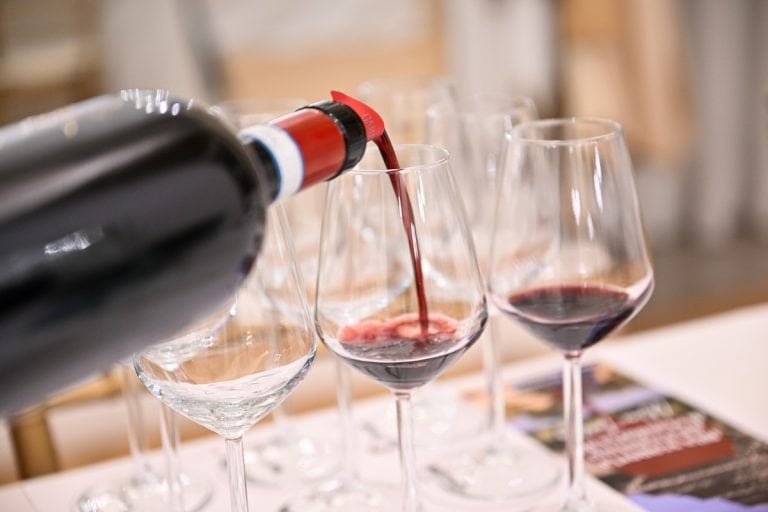
 Eating Italian in Paris: here are the restaurants chosen by Gambero Rosso
Eating Italian in Paris: here are the restaurants chosen by Gambero Rosso The Café in the heart of Rome where dozens of people queue every day to get in
The Café in the heart of Rome where dozens of people queue every day to get in The 11 best value for money Sauvignon wines from Friuli Venezia Giulia selected by Gambero Rosso
The 11 best value for money Sauvignon wines from Friuli Venezia Giulia selected by Gambero Rosso Armando Castagno's advice against the wine crisis: "Pop and mainstream communication, more aesthetics and no tricks"
Armando Castagno's advice against the wine crisis: "Pop and mainstream communication, more aesthetics and no tricks" The Roman cook who won over Chef Anthony Bourdain with a plate of Pappardelle
The Roman cook who won over Chef Anthony Bourdain with a plate of Pappardelle